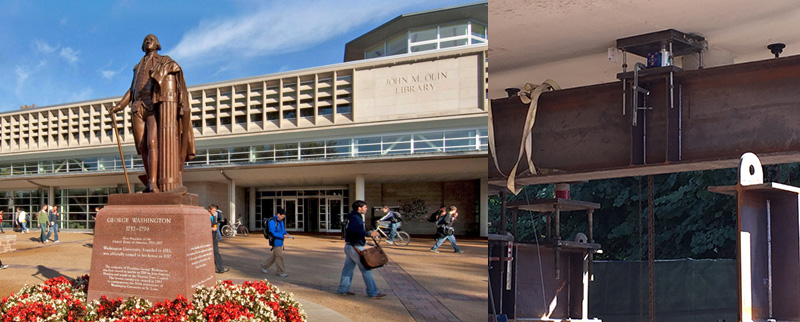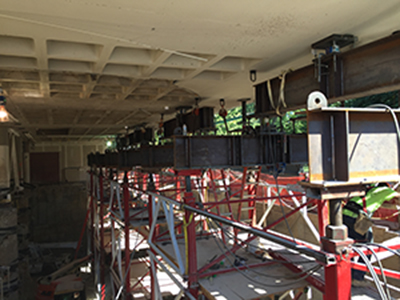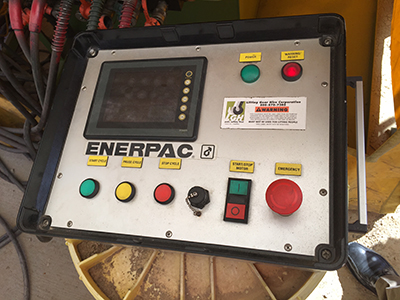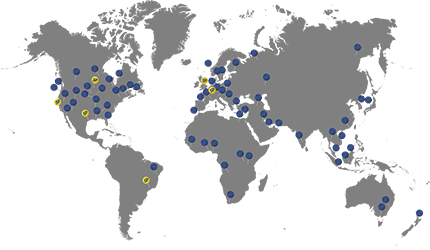Compression Load Cells Monitor Weight of Stories Above

Eight 150-ton capacity Straightpoint compression load cells, supplied by Lifting Gear Hire (LGH), were integral to completion of a donor-funded, $18 million transformation project at Washington University’s Olin Library in St. Louis, Missouri.
 The project will eventually increase the quantity and variety of seating, study, and research spaces for library users; establish a new north entrance; increase special collections exhibition and storage capacity; and enhance the accessibility and visibility of specialized research services and special collections. Newly created spaces are slated to be open in time for the fall 2017 semester.
The project will eventually increase the quantity and variety of seating, study, and research spaces for library users; establish a new north entrance; increase special collections exhibition and storage capacity; and enhance the accessibility and visibility of specialized research services and special collections. Newly created spaces are slated to be open in time for the fall 2017 semester.
The project included excavation below a café and an expansion of the cafeteria that will provide additional seating, study, and social spaces. New and updated spaces will become a vibrant hub of research expertise and support for faculty, graduate students and undergraduates.
Special Inspections & Design was contacted by fellow St. Louis company Alberici, the general contractor on the project, to support the second, third, and fourth floors of the precast concrete library building.
Steven Fults, principal engineer and co-owner at Special Inspections & Design, explained that three quarters of the building had a below-grade basement but the fourth was concrete slab-on-grade. While excavating soil from beneath the fourth quadrant, it was revealed that the original concrete piers (placed in 1960) did not bear on bedrock, only onto a limestone ledge that was, say, 2 ft. thick.
 Thus, Alberici had to shore up ¼ of the building and remove / replace 15 columns while the library stayed in service for students. Fults and his team presented a solution involving 400,000 lb. capacity scaffold towers on each side of these columns with W27 x 109 (depth of 27 in. and a normal weight per foot of 109 lb. f / ft.), 20 ft.-long longitudinal I-beams. Enerpac hydraulic rams, also supplied by LGH, were positioned on each of the four corners to apply load until they matched the dead load of the floors above.
Thus, Alberici had to shore up ¼ of the building and remove / replace 15 columns while the library stayed in service for students. Fults and his team presented a solution involving 400,000 lb. capacity scaffold towers on each side of these columns with W27 x 109 (depth of 27 in. and a normal weight per foot of 109 lb. f / ft.), 20 ft.-long longitudinal I-beams. Enerpac hydraulic rams, also supplied by LGH, were positioned on each of the four corners to apply load until they matched the dead load of the floors above.
Fults said: “The rams shored up the building from under the ceiling of the second floor. We wanted to match at least 90% of the weight or within 1000 lbs. of it. It meant the load cells played an integral role in providing continuous readout of the weight wirelessly to a computer. Each load cell was positioned in the middle of a beam in contact with the ceiling; we energized these beams and they pushed the ceiling upward, adding weight in 1,000, 5,000, or 10,000 lb. increments.”
The SP load cells displayed the actual applied force to the nearest 5 lbs. The latest version of Enerpac’s synchronous lifting system can integrate SP wireless load cell data directly into the controller.
A concrete saw was used to cut the old columns out, at which point that portion of the structure was resting on the load cells and rams connected to a hydraulic pumping unit on a trailer, 200 ft. away. Sometimes the team was working on four columns at a time, hence the requirement for eight load cell units.
Fults said: “When we cut the column out, Alberici demolished the underside with jackhammers, poured a new column foundation with cement, and set a new steel column. We poured high strength grout to fill the gap at the top. Supported by continuous readout from the load cells, we backed the hydraulic rams off slowly.”
He added: “The load cells were like watchdogs; at times all we needed to do was get updates first thing in the morning on elevations and weights. A standout memory from the project was the impact sunlight had. When the sun hit the building, weights fluctuated by several thousand pounds. It was apparent that the reinforced concrete building shifted loads internally within the redundancy of the structure.”



